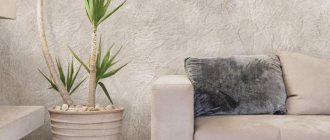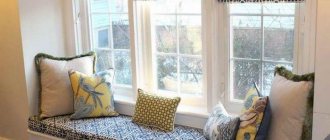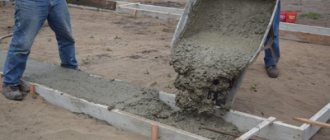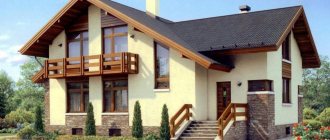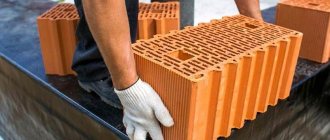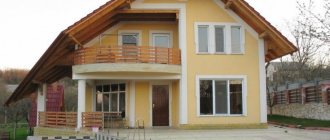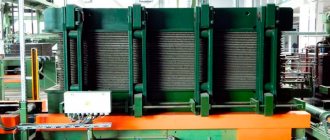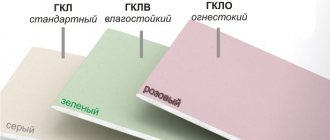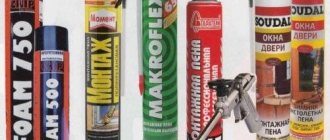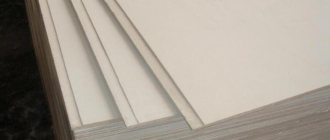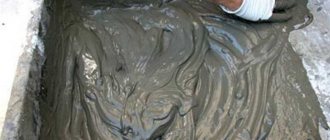- Facade plaster for external use: distinctive features of the material
- Preparing the surface with façade putty for exterior work
- Facade plaster: varieties and famous brands
- Features of mineral plaster for facades
- Acrylic decorative plaster for house facade
- Features of silicone plaster for facades
- Characteristics of silicate external decorative plaster
- Characteristics and features of Ceresit facade plaster
- Facade wet plaster technology: price per m2
- Video: how to choose plaster for a facade
Facade plaster for external use: distinctive features of the material
After completion of construction work, they begin to decorate the external walls of the building. High-quality cladding not only creates a presentable appearance of the building, but also protects the structure from the negative effects of precipitation, sunlight and mechanical damage. Facade plaster is the most popular material, about which you can find out in detail in this article.
Coating with facade plaster is an important step in finishing the external walls of a building.
Peculiarities
Plaster for finishing facades is used to protect against moisture and noise. At the same time, the materials are subject to decorative requirements. Powders are made from the main composite material, additives, binding particles and fractions. At the same time, the most presentable options are with stone; some varieties of bark beetle and acrylic plaster are suitable for interior use. Stucco usually has at least some texture. At the same time, in our time they adhere to the following approach: a smooth coating for ordinary buildings and a shaped coating for expensive facades. The very definition of “plaster” can now be conditionally replaced with “finishing for external work”. Transmittance property is important for the material. Plaster should not allow moisture and noise from the outside to pass through and heat from the inside, and, on the contrary, allow steam to pass through the walls.
Preparing the surface with façade putty for exterior work
Before proceeding to the final cladding of the external walls of the building, you should prepare the base using façade putty, which can be purchased on the company’s website https://www.optostroy.com/. It is intended for leveling surfaces made of concrete, stone, brick, foam blocks, gas blocks, gypsum slabs and other materials. Facade putty for external work must have moisture resistance, frost resistance, vapor permeability and elasticity.
Facade plaster for external use helps protect the façade of a building from negative weather conditions.
There are starting and finishing façade putties. The starting mixture is used for lower finishing of the base. Thanks to its coarse-grained structure, it is able to smooth out irregularities and differences. Used to seal chips and cracks. The result is a solid foundation. The working solution should resemble sour cream in consistency. The putty is applied in a layer of no more than 1.5 cm.
Bark beetle plaster: characteristics, advantages and disadvantages (read more)
Finishing putty, which has a finely dispersed structure, is used for final leveling of the base and provides a smooth, even surface for subsequent decorative cladding. The working solution is prepared more liquid than the starting mixture. The layer thickness should not be more than 4 mm.
Depending on the composition, the putty can be cement or polymer. Cement compositions have increased resistance to moisture and low temperatures. The starting cement mixtures contain quartz sand, and marble dust or ground quartz sand is added to the finishing putty. This is an unpretentious and inexpensive option, however, cracks may appear on the surface as the building shrinks. Popular brands of cement putties are Kreisel 662, SCANMIX TT, Knauf Multi-Finish, Plitonit and Facade.
Properly carried out stages of external plastering can achieve a high level of sound and heat insulation of walls.
Polymer putties, which contain polymer binders, can be acrylic or latex. Acrylic mixtures are moisture-resistant, elastic and plastic due to the main component – acrylic. This plaster is applied to a pre-primed concrete or foam concrete surface in a layer of 1-3 mm.
Latex putty, made from latex, is produced in the form of a paste that is odorless and does not emit harmful substances. This mixture has high plasticity, which eliminates the formation of cracks after it dries. Despite the high cost, it creates a durable coating. The most popular brands of polymer putties are SCANMIX LH STANDART, Bolars, Parade Classic.
Now you can proceed directly to the decorative design of the walls of the building, using facade plaster for exterior work.
Depending on the type of plastering work, it is recommended to use a reinforcing mesh to improve adhesion.
Types of textures of decorative facade plasters
To give the greatest aesthetic appeal, various types of textured application of plaster compositions are used.
Depending on the means and methods of creation, textures are divided into:
- Traditional . They are created on the basis of both mixtures of old and new generations. They have a texture depth of up to 0.5 cm.
- Modern . Created using only the latest materials.
Among modern textures the following categories can be distinguished:
- "Pebble" . Pebble textured plaster includes small granular formations with a size of 1 to 3 mm . It is a universal option, since based on it you can create both shallow bas-reliefs and “sgraffito”, “fur coat”, “polka dots”, etc. Giving relief is achieved by rubbing the composition applied to the façade with a plastic float. Additional tools such as a trowel, various rollers, brushes, etc. can also be used.
- "Bark beetle." One of the most common textured plasters. With its help, both vertical and horizontal, wave-like furrow patterns are created. It is applied similarly to pebble textured plaster.
- "Mosaic" . This type of texture is created on the basis of silicone or silicate plaster, to which coarse stone chips are added. Multi-colored granules form unique mosaic patterns on the plastered surface , reminiscent of mountain minerals. The application method is similar to pebble textured plaster.
Material texture
Facade plaster: varieties and famous brands
Decorative plaster for exterior use differs from facing materials intended for interior use. These mixtures contain additives that give the material plasticity, strength, moisture resistance and frost resistance.
When wondering how to choose facade plaster for exterior work, you need to pay attention to the material’s compliance with the following requirements:
- resistance to temperature changes;
- presence of water-repellent properties;
- increased degree of vapor permeability;
- sufficient strength to protect the building facade from mechanical damage;
- the coating must create sound and heat insulation;
- increased resistance to harmful radiation;
- the presence of decorative characteristics of the composition.
Plaster mixtures can be purchased either ready-made or in powder form, which must be diluted yourself.
Any external finishing creates additional thermal insulation of the building. However, for thin walls you should choose the so-called warm plaster for external use, which will contain a special filler. This can be perlite, polystyrene foam, vermiculite, sawdust or foam glass. They increase the thermal insulation properties of the finishing mixture. Thus, a 3 cm layer of plaster can replace the characteristics of 15 cm thick brickwork.
An additional soundproofing layer is provided by the exterior plaster of the house. To do this, it must contain pumice, magnesite or cement with slag or pumice. These porous components are capable of partially absorbing noise.
On a note! If the building is exposed to high noise levels, external plaster, as a reliable sound insulator, is ineffective. You should additionally use mineral wool or foam boards. Also, you can perform warm plaster for the facade.
The correct consistency of the plaster will allow you to efficiently apply the mixture to the surface and avoid drips and unevenness.
Among the proposed range of compositions for external work, 4 main types of facade plasters can be distinguished, which differ in properties, composition and application technology. There is also a fifth type - gypsum plaster for exterior use. However, it has a high degree of exposure to environmental influences, which makes it impractical for external cladding. It can be used to level the base or to prepare the surface for subsequent decorative cladding.
All facade plasters can form a smooth or textured surface such as “bark beetle”, “fur coat” or “mosaic”.
Technology of applying facade decorative plaster
With detailed instructions, most will be able to finish the exterior of a house using plaster. Much depends on the choice of material. However, I would like to note the surface on which the mixture will be applied. She plays an important role. The application technology varies depending on what material the building is made of.
Finishing facades made of aerated concrete
This is an ideal surface for applying the plaster mixture (the same applies to brick). The entire work process boils down to normal surface preparation (leveling and applying primer) and plastering. The exception is the use of thin-layer materials. Then, using a roller, the walls are treated with primer and pigment; its shade is selected depending on the future color of the plaster.
Step-by-step instructions for applying decorative plaster to aerated concrete manually:
- If a dry plaster mixture is used, it must be prepared. Facade decorative plaster for exterior use is mixed with water. The ratio is indicated on the packaging. Everything is thoroughly mixed with a construction mixer. After kneading, you need to let the mixture sit for 15 minutes, so it will reach readiness.
- If necessary, the composition is tinted in the selected color.
- The plaster is applied to the surface using a trowel. Using a spatula from the container, spread the mixture onto the edge of the trowel.
- The trowel with plaster is applied to the surface at almost an angle of 90°, after which a movement is made from bottom to top, while the angle decreases as the trowel passes until it completely reaches a parallel position. This way the composition will be evenly applied to the surface.
- With virtually no pressure, the tool is guided along the wall. This way the decorative plaster will be stretched into a layer with the required thickness.
- Having treated a surface of approximately 1.5 m2, it must be rubbed using a plastic grater. This will give you the desired texture.
All manipulations are repeated 3 to 6 times until the entire surface of the house outside has been treated.
Advice! As experts have noted, it is better to work immediately by area, and not by square meters. This will make the surface uniform in texture. If it is not possible to plaster the planned area at one time, then the joints are sealed with masking tape. You can’t stop halfway, having processed only half the wall.
Brick facade finishing
The work is also simple. Technology for creating exterior decoration of a house:
- Prepare the solution following the instructions on the package. If these are ready-made mixtures, then simply open the plaster.
- Bring the solution to the construction site.
- Take measures to prime the brick wall to improve adhesion. The work is done with a roller and brush.
- Metal beacons are fixed to the wall. Plastering on beacons is more convenient and easier for beginners.
- The wall is wetted to increase the drying time of the plaster after application.
- The plaster mixture is mixed to a homogeneous consistency.
- The solution is sprayed onto a brick surface separated by a lighthouse.
- Using a spatula, the surface is leveled with movements from bottom to top.
- Having processed one section of beacons, all defects are eliminated using a long rule. The surface turns out to be perfectly flat, since the beacons serve as a guide in working with the rule.
- While the surface is damp, small grooves are created using a scraper. They are needed to improve adhesion with rolling, that’s what the next layer is called.
- When the first layer has dried, you can begin to form the decorative finish.
At the end, the plaster layer is smoothed and leveled.
Plastering on insulating materials (mineral wool, polystyrene foam)
It is more difficult to plaster such a surface; it is not so strong and stable. Therefore, before application to the façade, a special reinforcing mesh is installed. Many people make a mistake in this matter - they apply the adhesive only on top of the mesh.
The correct technology looks like this:
- An adhesive composition must be applied to the facade. The treated area at a time is from 1 to 1.5 m2. The reinforcing mesh is fixed to the treated area and secured in the corners using thin sticks, as shown in the photo.
- A wide trowel (more than 30 cm) needs to be drawn along the surface of the mesh in different directions. You need to press lightly so that the adhesive substance comes out through the holes of the mesh, almost completely hiding it underneath.
- The edge of the mesh that hangs over the base is folded down and glued in the same way. To get a perfect bend, you can use a carbon spatula. All walls in the house are treated in the same way.
- When the glue dries, a second layer is applied, the mesh is hidden entirely.
- After which the surface requires priming. Then it is covered with a decorative composition for exterior use. Final plastering of the surface over the prepared layer is the same as with aerated concrete walls. It is described above.
This is what the facade of the processing field should look like in section:
Finishing of wooden facades
If you work with wooden walls (timber, chipboard, OSB), then there are two ways to finish the facade. The first of them is identical to working with insulation, as described above.
The second plastering technology is as follows:
- The outside of the facade is sheathed with special paper for this work (construction paper). This will enhance surface protection. It is fixed using a construction stapler.
- A metal facade mesh is laid on top of the paper layer. It is used for plastering work and has large cells. It is also fixed with a stapler. The inclination of the mesh and the level of its contact with the wall depends on the evenness of the walls.
- To treat a wooden facade, the plaster layer will be thick. In view of this, an aluminum profile is fixed at the bottom. It will serve as a limiter.
- The first layer is applied. It is made thick enough to practically hide the mesh. You need to wait for it to dry, and then apply a second layer of plaster. It will be leveling.
The finishing is carried out according to an identical algorithm, the same as with a gas silicate surface. The process is described above.
Wood is characterized by hygroscopicity. Moisture has a negative effect on the surface, and as a result, the façade may begin to crumble. To prevent this from happening, wood impregnations and hydrophobic primers are used.
Features of mineral plaster for facades
The composition of mineral plaster includes slaked lime, Portland cement, stone chips, colored clay, additional elements that increase the performance characteristics of the finished surface and components responsible for the texture of the finished facade. To increase resistance to fungus and mold, the mixture may contain additional fillers.
Cement plaster for facades forms a durable, non-flammable coating with a high level of thermal insulation properties.
The mixture is available in ready-made packages in the form of a powder, which must be diluted with a certain amount of water to obtain the finished solution. It can be applied to any type of surface. Before facing the walls, it is necessary to install a mesh under the facade plaster, which will level the surface, create additional adhesion of the plaster to the base and reduce the risk of cracks.
Cement plaster for exterior use creates a durable “breathable” decorative coating that does not smolder, does not burn, and does not emit toxic substances when heated. The suitability of the composition for work is no more than 90 minutes. After complete drying, a durable non-flammable coating with sound and heat insulation properties is formed on the wall surface. The decorative effect of the finishing material is provided by colored additives and granules.
On a note! Due to its low vibration resistance, mineral plaster should not be used for buildings located near railways and in areas with increased seismic activity.
Mineral plaster can withstand temperature fluctuations from -30 to +45ºС. without losing its performance properties. The service life of such coating is at least 15 years.
To give a more aesthetic appearance to a cement plaster coating, you can use façade paint for exterior use.
The color range of cement plaster is very limited, which reduces its decorative value. The finished surface of cement plaster can be painted in any color, thereby creating a more aesthetic appearance of the building.
Today, Knauf mineral facade plasters from the Diamant line, which have increased moisture-repellent properties and resistance to aggressive weather conditions, are very popular. Using a mixture of Diamant-240, you can obtain a textured “bark beetle” surface, and Diamant-260 forms a rough veneer, which is called a “fur coat.” The price of a 25 kg package is about 900 rubles.
Another equally popular option is Bolars mineral facade plaster, which can be purchased at a price of 700 rubles. Having a self-leveling structure, thanks to the modifying additives included in its composition, it creates a perfectly flat and smooth surface.
The moisture-repellent properties of plaster for exterior use help to avoid dampness and mold development in the house.
Cement plaster
The material is obtained from Portland cement, sand and special additives. Substances are added to the mixture that affect the texture of the finished surface.
Cement-based plaster has a high coating strength and is not flammable. It does not emit harmful substances as a result of heating. Apply the mixture to different types of facade surfaces.
The cost of this material is lower compared to other types of facade plasters. It can be painted with mineral compounds.
The disadvantages of mineral plaster include a small color palette. The strength of the layer depends on maintaining the proportions of the components, so it is better to purchase ready-made compositions.
Acrylic decorative plaster for house facade
Instead of cement as a binder, acrylic resins are used in acrylic plaster. In addition, modifiers are used here that increase the plasticity and strength of the coating, dyes and one of the fillers, such as stone chips, sand or colored granules, which create the structure of the decorative surface.
Acrylic plaster is available in the form of a ready-made solution, which is immediately suitable for application. The layer sets in 20 minutes, and the surface dries completely after 48 hours. During this time, the coating should be protected from exposure to direct sunlight, which contributes to cracking of the facing layer.
On a note! Due to the rapid setting, joints between layers may be noticeable on the surface, so it is better to entrust the work to a professional.
It is worth considering that acrylic plaster for external wall decoration quickly becomes dirty, so it is recommended to additionally coat it with dyes with water-repellent properties.
The acrylic-based mixture has increased resistance to temperature changes. It creates a good moisture-resistant surface with additional protection from strong gusts of wind. Due to the high elasticity of the coating, the likelihood of surface cracking is reduced. A building facade made with acrylic plaster will have increased resistance to abrasion and impact, which increases the service life of the surface, which reaches 20-25 years.
However, it is able to quickly attract dirt to itself. To clean the surface, simply spray the cladding with water from a hose. Another disadvantage of acrylic-based external composition is the instability of the pigment to UV radiation, which fades after some time. This plaster is not recommended to be applied to mineral wool bases and walls made of cellular concrete.
The most popular manufacturer of acrylic plasters is the Caparol company. The price of façade plaster “bark beetle” starts from 600 rubles. A mixture of granular structure of the “fur coat” type can be purchased at a price of 800 rubles.
An equally popular manufacturer of acrylic mixtures is the company Baumit, which offers its products at prices starting from 1,500 rubles.
Due to its good adhesive properties, acrylic plaster can easily be painted in any desired color.
Calculation and material consumption
Before purchasing, you should calculate the consumption per 1 m² - calculations are carried out in the plaster calculator. The fields should be filled in taking into account the average curvature of 1 meter. In the first column, indicate the length of the wall in meters, and in the second, enter its height. Then add the average thickness of the plaster layer in millimeters. At the end, the type of mixture is indicated, for example, acrylic or silicate, etc. The result can be obtained in kilograms or in bags if you enter the mass of one. The consumption of plaster largely depends on the surface material and its curvature. For walls made of plasterboard, wood, brick and concrete, the indicators are significantly different. The approximate costs of each mixture per 1 m² are indicated on the packaging, so you will need to convert this into coefficients and multiply by the corresponding parameters of the base. The average level of coating deviation is usually in the range of 20-25 mm.
The average level of curvature is calculated per 10 m², measured at 3 points.
Features of silicone plaster for facades
This is one of the most expensive facade mixtures. Silicone plaster contains silicone resins, coloring pigments, fillers and additives that increase the durability of the material. The mixture is available in the form of a ready-made solution, suitable for application to a surface previously cleaned of dirt and dust. The technology for applying plaster and the conditions for its drying are the same as for the acrylic mixture. Work on cladding the façade of a building can be carried out in difficult weather conditions. However, the mixture cannot be applied to the insulation layer. It is necessary to create a reinforcing mesh on top of it.
On a note! After finishing the façade with silicone plaster, the surface should be coated with silicone primer. This will create additional elasticity of the surface and leave it intact during possible shrinkage of the building.
Silicone coating has increased moisture resistance, elasticity, self-cleaning ability, and increased vapor permeability. The material is suitable for cladding not only walls, but also basements. You should choose silicone facade plaster for aerated concrete, concrete and brick walls. The plastered surface is resistant to salt, so it is an ideal option for coastal regions with high air humidity. The silicone surface will not become a breeding ground for fungus.
Silicone plaster is an excellent solution for finishing the basement of a building, reliably protecting and extending the service life of the foundation.
There are more than 200 color and shade options. The pigment included in the mixture is resistant to UV radiation and does not fade over time. The service life of such coating is 20-25 years. The only drawback is the high cost of the mixture.
The most popular silicone plasters for facades, the price of which starts from 2,400 rubles, are decorative mixtures Kaparol. The manufacturer produces two types of textures of this plaster: “bark beetle” (AmphiSilan Fassadenputz R 20, AmphiSilan Fassadenputz R 20) and “fur coat” (AmphiSilan-Fassadenputz K15, K 20, K30).
Another brand of silicone plasters is the Baumit company, which offers its products from 2,300 rubles.
Application rules and techniques
Before finishing with plaster mixtures, prepare the surface carefully and without haste. Be sure to remove any remnants of the old finish. Find the most protruding point on the wall. If you do not reduce this part of the coating, you will need to apply plaster up to this level. Defects must be taken into account: a depth of up to 3 cm is considered acceptable. The recesses are simply covered with the mixture, and if the indicator is higher than normal, additional layers of plaster will have to be formed. Then they move on to priming. A special solution is applied with a roller to increase adhesiveness. Sometimes one layer is enough, but it is better to do two. The plaster itself is applied with a spatula, leveling the coating and its subsequent processing. The finishing layer is placed at an angle of 60°. Decorative materials are applied with a roller, brush, spatula, brush or trowel, or again with a spatula, if the design requires it.
Nuances of application technique:
- The solution is placed in a layer of 0.3-1.5 mm.
- Each new layer is dried for at least 30 minutes at a temperature above +20 °C.
- The final coating is applied no earlier than three days after the previous manipulations, and only on a dried surface.
Application to insulation - mineral wool or polystyrene foam
Mineral wool can be covered with plaster if the insulation density is 150 kg/m³ or more. A layer of glue is applied to the mineral wool and then an alkali-resistant fiberglass construction mesh is pressed into the resulting layer and insulation. When the structure is assembled, it can be plastered, painted, etc. After applying the glue, the surface should be reinforced with umbrella dowels for greater reliability: one in the center and the same number along the edges of the surface is enough. If the glue layer has minimal unevenness, then add another one for leveling. A plaster mesh with appropriate fastening is first installed on the layer of foam insulation. Then mashing is carried out on it. After completing the first two stages, they begin to level the coating. The layer is laid out and rubbed. The resulting surface is primed. Then all that remains is to apply the finishing coat.
Plastering brickwork
The process includes standard surface treatment steps:
- Inspection;
- Preparation;
- Padding;
- Reinforcement;
- Installation of beacon strips;
- Application of finishing material.
First of all, remove dirt and dust, eliminate cracks at the joints. Sound insulation and protection against heat loss depends on the integrity of the coating. In general, insects may remain in the cracks, which will destroy the finish in the future. The surface is then primed. Before applying porous plaster compositions, a deep penetration primer is used. Usually two layers are applied. The brick surface has an uneven topography, so it is better to play it safe and organize a reinforcing mesh. As a material for the frame, it is better to choose a non-corrosive substance, for example, plastic. From the reinforcing structure, rust can transfer to the finish and thus cause stains. The defect cannot be corrected. Subsequently, metal profiles are installed as beacons. When the desired layer of plaster is on the wall, the planks are removed.
Applying plaster to aerated concrete blocks
Aerated concrete easily absorbs moisture, so finishing begins with protecting the blocks from getting wet. In warm regions this is not important, but winter with negative temperatures will lead to freezing of moisture in the blocks. As a result, the building material’s resistance to loads will decrease. Aerated concrete walls are plastered only in the warm season. If the seams were filled not with special glue, but with concrete-sand mortar, then they will wait a week longer before starting work. Next, the surface of the wall is saturated with a deep-action primer and, if possible, covered with polyethylene. Some experts are inclined to believe that aerated blocks should be finished both from the outside and inside. Then the finishing begins with the premises, and only then, when the internal lining has dried well, the facade is plastered. Applying plaster to aerated concrete blocks, in addition to the standard stages of base preparation and priming, includes the formation of a “fur coat” and strengthening of corners.
Houses on the seashore, lake or river require less interior finishing.
Finishing of wooden facades
Plaster for external walls is applied to houses made of timber, less often - to buildings made of sip panels, logs and other types of wooden buildings. Before cladding, even fully finished boards are treated with antiseptics against insects and fungi. The first layer will be waterproofing. For log houses you will need a reinforced system. Then a reinforcing façade frame is installed and several layers of plaster are applied. Then the beacons are removed from the sheathing. Experts allow the use of acrylic solutions, as well as mineral varieties. These materials have high breathability and are resistant to mechanical damage. To finish a wooden surface, it is better to use ready-made mixtures without tinting. The plaster is selected to match the tone of the wood, because if the shade does not match, the surface will look sloppy. Instead of plastering, they often resort to installing curtain facades. They improve temperature exchange and withstand cold and heat.
Characteristics of silicate external decorative plaster
Another expensive but high-quality facing material is silicate plaster. It is similar in composition to mineral plaster, but it additionally contains liquid potassium glass, which improves the performance parameters of the surface.
To decorate the facade and porch of a house, you should choose plaster, which has not only high performance characteristics, but also decorative properties.
This is the most elastic plaster for facades. It has increased abrasion resistance, moisture resistance, and antistatic properties. The facing surface provides a high level of external wind and moisture protection of the building facade. Preference should be given to silicate facade plaster for aerated concrete, concrete and wooden walls. Such a facing surface is ready to serve for more than 25 years without losing its original decorative and operational properties.
The mixture is sold in the form of a ready-made solution, which is applied to a clean base. Manufacturers have taken care of a wide palette of colors and shades. However, after some time you can change the color of the surface by painting it with silicate paint.
Note! Silicate plaster cannot be applied to polymer insulation and surfaces painted with oil paint or varnish.
The main disadvantage of the silicate mixture is its rapid setting after application, which requires perfect execution of the work the first time without errors. To do this, you need to use the services of professionals. In addition, before applying silicate plaster, it is necessary to treat the base with a special primer that increases the adhesion of the mixture.
In order to achieve relief of the decorative layer of plaster, it is necessary to use special graters, rollers or brushes.
The most popular manufacturer of silicate decorative facade plaster, the price of which starts from 1800 rubles, is the Baumit company. It offers a wide range of high-quality and durable products. These mixtures have increased viscosity and protect walls from exposure to precipitation and burnout.
Installation of plaster
Only now, after you have read, can you begin to directly apply the finishing material to the wall.
- Start from the top of the facade - carefully coat the entire wall.
- The layer should be such as is required to impart color to the surface: if the brick is visible through small granules of the finishing material, then more plaster should be applied.
- The plaster takes 8 hours or more to dry (depending on the composition), so try to fit in this time and do the part of the work that you have planned for today. All frozen excess strokes are removed with a spatula.
Level the surface before it dries
Installation tips:
Decorative plasters for facades are applied with a scraper or spatula. Once the mixture begins to thicken, use a stand mixer or mix it thoroughly with a spatula.
Characteristics and features of Ceresit facade plaster
Today, German-made Ceresit façade plaster is very popular due to the high quality of the material. Thanks to the special additives included in its composition, high strength characteristics of the material are ensured. It is characterized by increased moisture resistance, vapor permeability and elasticity. This coating has a long service life of about 20 years.
There are three types of textured facade plaster Ceresit:
- budget polymer-cement mixtures in which cement is used as a binding component;
- mixture with polymer resins, which has high performance characteristics;
- expensive polymer-cement plasters, which contain cement, sand, synthetic polymer additives, various plasticizers and fibers.
Facade plaster with large marble chips is excellent for cladding the facade of a building, forming a reliable protective layer with excellent decorative characteristics.
Ceresit plasters with a polymer composition can be acrylic, silicone and silicate. Acrylic mixtures are used in areas with high rainfall. Silicone plaster also resists moisture, steam, and snow well. This facing coating is durable and durable. Silicate plaster for the facade adheres firmly to the base and is resistant to deformation. It tolerates sunlight well. The cost of cement plaster is about 250 rubles. Decorative textured facade plasters “bark beetle” and “fur coat” can be purchased from 850 rubles.
Thanks to the wide range of colors of Ceresit facade plasters, you can choose the most suitable color that will create an attractive appearance of the building. It should be taken into account here that very light shades quickly fade and become discolored, while shades that are too dark attract ultraviolet radiation most strongly, which contributes to rapid cracking.
Variety of choices
Today there is an incredibly large assortment of decorative plaster on sale that can be used to decorate the facade. You can choose materials of different types, colors and textures.
Cement
The binder in this situation is cement. This plaster is most often used for finishing brick, concrete or aerated concrete surfaces. In this case, it is important to properly prepare and clean the walls. Cement decorative plaster is considered the most common and at the same time affordable material option for facade finishing.
The advantages of cement plaster include:
- High adhesion rate. Before applying plaster to the wall surface, there is no need to additionally treat it with a primer. The applied solution will retain its properties and integrity for a long time.
- High strength index. In terms of this parameter, cement plaster is a leader among other materials.
- Tolerates moisture well. This decorative coating can be used even in regions where the climate is too humid.
- Low price.
- The composition contains cheap and accessible components.
At the same time, cement plaster also has some disadvantages.
- It will take quite a long time to dry completely.
- Due to the rather large weight, it puts additional stress on the structure.
- Not suitable for finishing plastic and wooden surfaces.
- The composition is sold exclusively in dry form, so you will have to spend time preparing the solution.
In general, a huge number of advantages and the affordable price of the material cover the existing disadvantages.
Gypsum based
To create such plaster, gypsum is used. This type is not used for external decoration of facades, because gypsum absorbs moisture very quickly. In addition, this finishing option does not withstand mechanical damage. For this reason, gypsum decorative plaster can be used exclusively indoors.
Mosaic
This building material is made from natural stone chips and acrylic resin.
Today, mosaic decorative plaster is considered very popular in creating not only the interior, but also the exterior of a building. The base can be any natural stone. Granite, quartz, marble or malachite are most often used. The dimensions of one granule can range from 0.8 to 3 mm. After the mixture has completely dried, it forms a rather interesting surface with an original structure.
Mosaic decorative plaster can be coarse-grained, a mixture of small and medium fractions, or fine-textured, where the smallest granules are present. The material is also divided into types depending on what kind of natural stone was used to create this plaster.
Mineral plaster
Mineral plaster has a very affordable price. The material can be found on sale in bags of different sizes. The main substance for creating the mixture is cement. This type of plaster has many advantages, the main ones of which include the following:
- Mineral plaster allows moisture to pass through very well, which can adversely affect the main elements of the building.
- The material does not allow mold and mildew to multiply on the surface of the façade.
- Mineral decorative plaster is not flammable and will not burn.
- After the finishing material has completely dried, cracks do not appear on the surface of the facade, even over time. The plaster will not sag.
- Has a very high moisture resistance.
- Not afraid of very low temperatures.
- It is possible to finish the façade using mineral plaster at a wide range of air temperatures.
- The material will not require any special care in the future.
- The material is environmentally friendly and does not harm human health.
Also, do not forget about the shortcomings that are present in any finishing material.
- The substance is sold exclusively in dry form and packaged in bags. Before you begin finishing the facade, it is necessary to properly prepare the solution. The suitability and service life of the material used depend on how correctly the proportions are observed.
- Not everyone will be able to do all the necessary work on their own, as they will require some experience working with the material.
- For tinting you can use not all colors and only special paint. The material is dark in color, so painting over it will be very problematic. In this case, painting is usually carried out in several layers, which causes unnecessary financial costs.
- The material cannot withstand vibration vibrations.
- It has a relatively short service life, which averages 10 years.
Silicate decorative plaster
Liquid glass is used to create liquid decorative plaster.
This material is used exclusively outside houses, which are additionally insulated with expanded polystyrene or mineral wool. Can be applied to surfaces made of aerated concrete and gas silicate blocks. You can purchase it in specialized stores immediately in finished form.
Silicate decorative mixture has the following advantages.
- The substance is not electrostatic.
- It does not have a very high level of elasticity, but this does not prevent it from filling all cracks and avoiding shrinkage.
- Has a high vapor permeability rate.
- The material contains special particles that repel water very well.
- If the mixture is too thick, you can add a small amount of water to it.
- It is one of the finishing materials with a fairly long service life, which can reach 20 years.
Silicate decorative plaster is considered a very capricious substance, so it is worth remembering some important nuances when using it.
- If you open a can of plaster, the substance will dry out very quickly.
- Before applying the composition, it is necessary to carefully prepare the surface. Pre-priming will be required. Because of this, the duration of work increases significantly.
- In order to correctly apply the solution to the surface of the facade, you must have certain skills and experience.
- Do not apply the material to walls at low temperatures. All work must be performed at temperatures above 20 degrees. Air humidity should not be higher than 60%.
- The substance can be stored for only one and a half years, provided that the packaging is undamaged.
Acrylic plaster
High-quality acrylic resin is used to produce the material.
You can purchase material for external façade finishing ready-made and you won’t need to waste time preparing it before starting work. Many people like acrylic plaster because it has many more advantages than other compositions. The main ones include the following:
- Due to the presence of acrylic polymer, after drying the finish becomes incredibly durable and is not afraid of mechanical damage.
- Does not deteriorate when exposed to sunlight.
- It is not afraid of moisture and does not let it in.
- It hardens and becomes hard very quickly, so you can quickly get the desired result and move on to the next stage of work.
- Not afraid of sudden temperature changes.
- Acrylic plaster can be applied to the facade of a building at any air temperature.
- Acrylic plaster is an incredibly elastic material that perfectly fills all cracks and even pores. Due to this, you can achieve excellent adhesion to the surface.
- When the substance is completely dry, you can apply almost any paint to it and select the desired color.
The only drawback in this situation is that acrylic decorative plaster for facade finishing has a very high electrostatic index. As a result, the substance will attract dust and various contaminants to the walls.
Silicone decorative plaster
The substance contains a special type of silicone resin, which has a very high elasticity index.
There is a completely ready-made mixture on sale, which does not need to be prepared for further application to the surface of the facade.
In addition, the silicone mixture has the following advantages.
- Due to its high elasticity, the material completely fills all cracks.
- During operation, conditions suitable for the growth of fungus and mold do not arise.
- Does not allow moisture to penetrate inside the finish.
- Passes steam well.
- It tolerates both low and high temperatures.
- It can be applied to the façade surface manually or mechanically.
- Interacts perfectly with the surface on which it is applied.
- Does not have an unpleasant odor.
- It is one of the materials with a long service life. Silicone decorative plaster does not lose its properties and characteristics for 25 years.
The only disadvantage of such plaster is the very high price.
https://www.youtube.com/watch?v=5n-ip-DiGMA
Facade wet plaster technology: price per m2
Wet facade plaster is considered a technology for finishing the external walls of a building, in which insulation, reinforced mesh and facing material are attached using semi-liquid or liquid compounds. Thanks to this finishing, the dew point that absorbs condensation is moved outside the building, which affects the creation of a favorable microclimate in the house. For a wet facade, it is typical to use adhesives, including plasters.
The decorative layer of the wet technology of applying facade plaster can be painted using a special color scheme.
The wet plaster facade consists of three main layers:
- thermal insulation;
- basic;
- decorative.
The facade insulation under the plaster is fixed to the base using an adhesive. For this purpose, Portland cement compounds are often used, which ensure excellent adhesion of the insulation and the supporting base.
It is very important to choose a good facade insulation for plaster. There are several varieties of this material. The best option in this case is to use mineral wool, polystyrene foam or OSB boards. They provide moisture resistance and reliable heat retention. The average cost of installing a heat-insulating layer is 500 rubles/m².
The base layer is a rigid layer that protects the insulation from negative influences. Polymer cement solutions or reinforced fiberglass mesh act as a layer. Installation of the base layer will cost 150 rubles/sq.m.
There are several standard schemes for working with textured plaster, for example, “bark beetle” or “fur coat”, but if you wish, you can create an absolutely unique, original design or ornament.
The creation of a decorative layer is the application of facade plaster to the prepared surface. The cost of plastering walls depends on the application method (manual or machine) and texture, and averages 400 rubles/sq.m. Additional painting of the facing surface will cost from 170 rubles/sq.m.
The main purpose of facade plaster is the final, finishing exterior design of the walls of the building. This decorative coating is affordable, durable and has a number of distinctive features that make it one of the most popular facing materials.
Plastering as one of the ways to decorate a house beautifully (read more)
Basic requirements for choosing facade plaster
To understand which plaster to choose for the facade, you need to look at whether all the requirements for this type of finishing material are met.
Since this plaster will be used outdoors, it is important that, despite the weather conditions, the wall covering remains perfect. Therefore, high-quality facade plaster must be moisture- and heat-resistant. This is also convenient for cleaning small stains on the walls. During operation, dust may settle on the coating; in rainy weather, the walls may become dirty with dirt. Thanks to moisture-resistant plaster, the surface can be washed with soapy water to get rid of stains.
Another important requirement for such a material is vapor permeability. The plaster must have good permeability so that condensation does not accumulate under the finish. Otherwise, the facade cladding will be short-lived. It is important that the plaster can release steam masses outside and not let them in.
Features of preparing the base material
A house may have walls made of various materials. Each of the materials sets its own conditions and also requires a certain finishing technology. Read more about how to prepare the base for working with decorative plaster.
When working with any base, remember to reinforce the corners. You can use a special corner for this.
Insulation
Penoplex, expanded polystyrene and mineral wool have a surface that should be “dressed in a corset” before finishing. For this purpose, an adhesive reinforcing layer with fiberglass mesh is used. The adhesive composition is applied to the surface of the insulation with a layer of 5-6mm. The layer is “combed” with the serrated edge of the trowel. A mesh is placed over the glue, pressed and secured with thin short sticks in the corners. The mesh sections are overlapped (10 cm). At the corners of the house, the mesh is applied in 2 layers or special profiles are used. Having buried the mesh into the layer with a spatula, smooth its surface with a plastic trowel. After the glue has dried, you need to apply a primer that is chemically suitable for the composition of the finishing layer.
For finishing in this case, silicone, silicate or mineral (cement) compounds are often used, less often acrylic plaster is used, since it does not “breathe” well. It is important that the materials of the insulation, “casing”, primer and solution are combined with the parameters of thermal expansion and have approximately the same hygroscopicity and thermal conductivity. Then the finishing layer will not crack.
Brick, concrete
The brick/concrete wall is prepared as follows:
- the wall is cleaned of dirt,
- the seams are embroidered to a depth of 10mm,
- the wall surface is primed,
- after the primer has dried, a mesh and beacons are attached to the wall, if a leveling layer is needed (a mesh for a concrete plinth is simply necessary),
- a leveling layer is applied by spray, leveled with a rule, smoothed,
- the wet layer is cut with a scraper to increase adhesion,
- After the leveling layer has dried, a decorative finishing layer is applied.
Tree
The wooden wall is cleaned, notches are applied with a sharp tool, primed, a mesh with large cells or shingles is attached, a leveling layer is applied by spray, after which everything is done in the same way as preparing a brick wall. The most suitable for wooden surfaces is a silicone mixture. It stretches so well that it perfectly follows a strongly “playing” tree.
